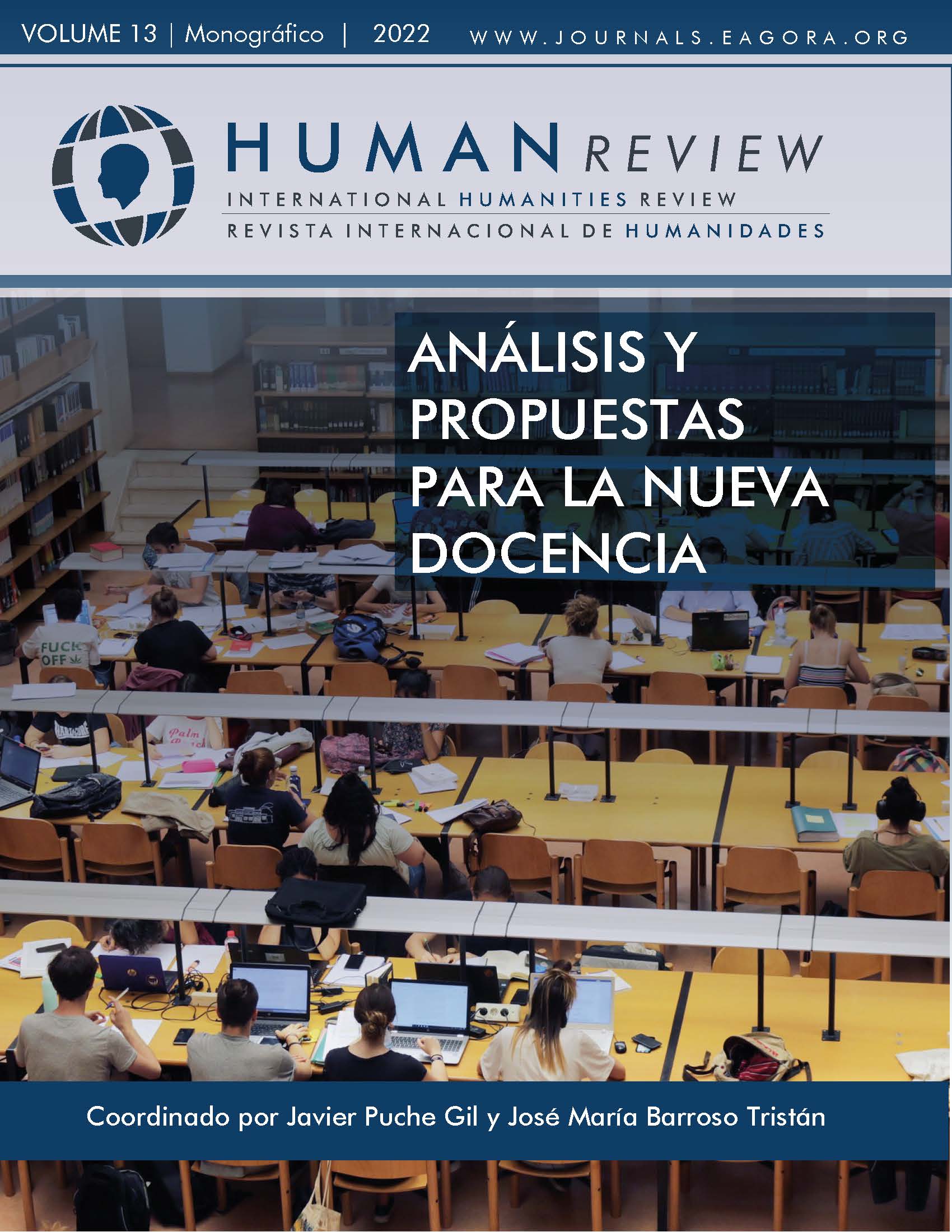Current situation and socio-educational challenges of young afro-descendent women in the basque country
DOI:
https://doi.org/10.37467/revhuman.v11.4046Keywords:
Afrodescendants, Women, Identity, Diversity, Equality, Basque Country, Socio-educationalAbstract
In this article we focus on the reality of young Basque women of African descent, in terms of their experiences and the difficulties they encounter, based on five dimensions such as; the family and social network, education, the workplace, identity and coexistence. For this, a qualitative methodology of social research has been used. Specifically, a discretionary survey has been prepared consisting of a total sample of three discussion groups. The results of the five dimensions analyzed reflect the difficulties that these girls have to deal with in their lives.
References
Alba, R., & Holdaway, J. (2013). “The Children of Immigrants at School. A Comparative Look at Integration in the United States and Western Europe”. New York University Press.
Aparicio, R. (2007). Las „segundas generaciones“ en España ¿Qué movilidad social? En J. J. Igartua & C. Muñiz (Eds.), Medios de comunicación, inmigración y sociedad (pp. 311-341). Salamanca: Universidad de Salamanca.
Aparicio, R. y Tornos, A. (2006). Hijos de inmigrantes que se hacen adultos: marroquíes, dominicanos, peruanos. Ministerio de Trabajo y Asuntos Sociales (Observatorio Permanente de laInmigración).https://extranjeros.inclusion.gob.es/es/observatoriopermanenteinmigracion/publicaciones/fichas/publicacion_08.html.
Aparicio, R., & Portes, A. (2014). Crecer en España. La integración de los hijos de inmigrantes. La Caixa.
Barquín, A. (2009). ¿De dónde son los hijos de los inmigrantes? La construcción de la identidad y la escuela. Educar (44), 81-96.
Barquín, A. (2015). ¿Qué debe hacer la escuela con las culturas familiares del alumnado inmigrante? Educar, 51/2, 443-464.
Colectivo loé, Actis, W., De Prada M. A., & Pereda, C. (2009). Towards a social construction of a European youth: the experience of inclusion and exclusion in the publicsphere among second generation migrated teenagers. Informe TRESEGY (N.°029105). http://www.colectivoioe.org/uploads/89b9a2e86010571f2c6c4d8e180344e3510f82ac.pdf
Colectivo IOE. Actis, W.; de Prada, M. A.; Pereda, C. (2016). Discursos de los españoles sobre los extranjeros. Migraciones. Publicación Del Instituto Universitario De Estudios Sobre Migraciones.
Denzin, N. K. (2009). The elephant in the living room: Or extending the conversation about the politics of evidence. Qualitative research, 9(2), 139-160. https://doi.org/10.1177/1468794108098034
Gimeno, A. (1999). La familia: el desafío de la diversidad. Ariel
Guerrero, M. A. (2016). “La investigación cualitativa”, INNOVA Research Journal, 1(2), 1-9. https://doi.org/10.33890/innova.v1.n2.2016.7
Gualda, E. (2007). Segunda generación y adolescentes y jóvenes inmigrantes: el caso de Huelva. En E. Gualda & I. Rodríguez (Dirs.). Infancia y juventud en las migraciones internacionales (pp. 51-70). Exlitris.
Hall, S. (2020). El triángulo funesto. Raza, etnia, nación. Traficantes de Sueños.
Krueger, R. (1991). El grupo de discusión guía práctica para la investigación aplicada. Pirámide.
Maalouf, A. (1999). Identidades Asesinas. Alianza.
Martínez, E. (dir.) (2022). Discriminación racial en el ámbito de la vivienda y los asentamientos informales. Ministerio de Igualdad. Subdirección General de Relaciones Institucionales e Internacionales y Publicaciones. Centro de Publicaciones. https://www.igualdad.gob.es/ministerio/dgigualdadtrato/Documents/Informe_Discriminacion_racial_2022.pdf
McMillan, J. H., Schumacher, S. & Baides, J. S. (2005). Investigación educativa: una introducción conceptual. Pearson.
Moncusí, A. (2007). „Segundas generaciones“ ¿La inmigración como condición hereditaria? AIBR. Revista de Antropología Iberoamericana, (2)3, pp. 459-487.
Movimiento por la Paz (2021). Mujeres africanas y afrodescendientes en España. Análisis de los factores de discriminación en el acceso a la salud, la educación, el empleo, la vivienda y los servicios sociales. Área de Comunicación del Movimiento por la Paz –MPDL. https://www.mpdl.org/sites/default/files/210715-informe-mujer-afrodescendiente.pdf
Oleaga, J.A (Ed.) (2017). La diversidad infantil y juvenil en la CAE. Las(mal) llamadas segundas generaciones. Universidad Pública del País Vasco. https://www.ikuspegi.eus/documentos/investigaciones/2G/Diversidad_infantil_juvenil_CAE.pdf
Pedone, C. (marzo, 2007). Los hijos y las hijas de la migración ecuatoriana: lecturas transnacionales de los cambios familiares. Ponencia presentada en el V Congreso sobre la Inmigración en España. Migraciones y Desarrollo Humano, Universitat de Valencia, CEIM.
Roca, N. (2008): “Inmigración, identidad y procesos de inclusión y exclusión social” en “La política de lo diverso”: ¿Producción, reconocimiento o apropiación de lo cultural?. En Training Seminar de Jóvenes Investigadores en Dinámicas intercultural. Fundación CIDOB - Foro Interdisciplinario de doctorandos, 39-5. https://www.cidob.org/content/download/8166/83316/file/06_roca.pdf
Rumbaut, R. (2004). Ages, Life Stages, and Generational Cohorts: Decomposing the Inmigrant First and Second Generations in the United States. International Migration Review, 38(3):1160-1205.
Simon, P. (2003). France and the unknown second generation. International Migration Review, 37(4), 1091-111.
Warner, W. L., & Srole, L. (1945). The social systems of American ethnic groups. Yale University Press.
Downloads
Published
How to Cite
Issue
Section
License
Those authors who publish in this journal accept the following terms:
- Authors will keep the moral right of the work and they will transfer the commercial rights.
- After 1 year from publication, the work shall thereafter be open access online on our website, but will retain copyright.
- In the event that the authors wish to assign an Creative Commons (CC) license, they may request it by writing to publishing@eagora.org









